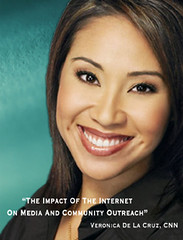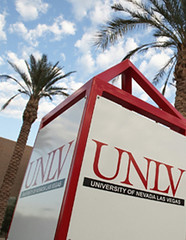Unilever, maker of several leading consumer products including Dove soap, recently learned that no good deed goes unpunished. They now know better than most: attempting to maintain a brand as a good corporate citizen and environmentally friendly company is a tricky business these days.
Despite scoring at the top of global ethical and sustainability indexes during the last year, and being considered a company that takes environmental issues seriously, Unilever continues to be the target of Greenpeace because it buys palm oil from other companies that are destroying the rainforest, which is also endangering Indonesian orangutans.
Unilever is not alone. According to Greenpeace, the world's largest food, cosmetic, and biofuel companies are driving the wholesale destruction of Indonesia's rainforests and peatlands through growing palm oil consumption. In a report, Greenpeace predicts the demand for palm oil will double by 2030.
For an Advertising Age article, Greenpeace said it did not single out Unilever because of its high-profile environmental and social stances, but added that there “was an element of greenwash there.” In fact, he said, Proctor & Gamble and Nestle may be the next targets.
”Most activists of whatever persuasion on whatever issue tend to believe that they get most traction (and news coverage) by aiming at the biggest name rather than the biggest challenge," a Unilever spokeswoman e-mailed Advertising Age. "In most instances, it seems that the biggest 'name' tends to be the one that has done the most to attack the ... problem."
From a communication perspective, the spokesperson’s e-mail interested us the most because it supports our fragile brand theory, which suggests: the further perception travels from reality or the more unsustainable it might be, the greater the potential for brand damage. Overreach too much and, eventually, the brand might face total collapse.
It doesn't always matter that there are companies with much more environmentally or socially deplorable practices than Unilever. However, those companies do not receive a brand boost from the perception that they might be green.
So maybe it’s not always that activists are after the biggest names. They are after the biggest contrasts between perception and reality.
Our environmental policy sets out our commitment to meet the needs of consumers and customers in an environmentally sound and sustainable manner, through continuous improvements in environmental performance. — Unilever
In reading through the company’s environmental policy, it does seem to achieve some goals (packaging reduction, for example) better than others. Specifically, the policy states that the company aims to “ensure the safety of its products and operations for the environment” and will be “exercising the same concern for the environment wherever we operate.” If they are enabling foreign suppliers to do the opposite, then Unilever is not meeting those standards. That’s a problem, but not only in action.
Don’t get me wrong. I’m not making a case against Unilever as much as I am making a case for communicators to resist messages that overreach. The truth is that relatively few companies (and even fewer people) can produce a perfect environmental scorecard.
All I'm suggesting is that we don't claim to be avid recyclers if we’re sharp on putting newspapers in the bin but shoddy on plastic bottles (because they have to be rinsed out). Authenticity simply suggests that we stop at touting our efforts at paper products if that is the case.

Despite scoring at the top of global ethical and sustainability indexes during the last year, and being considered a company that takes environmental issues seriously, Unilever continues to be the target of Greenpeace because it buys palm oil from other companies that are destroying the rainforest, which is also endangering Indonesian orangutans.
Unilever is not alone. According to Greenpeace, the world's largest food, cosmetic, and biofuel companies are driving the wholesale destruction of Indonesia's rainforests and peatlands through growing palm oil consumption. In a report, Greenpeace predicts the demand for palm oil will double by 2030.
For an Advertising Age article, Greenpeace said it did not single out Unilever because of its high-profile environmental and social stances, but added that there “was an element of greenwash there.” In fact, he said, Proctor & Gamble and Nestle may be the next targets.
”Most activists of whatever persuasion on whatever issue tend to believe that they get most traction (and news coverage) by aiming at the biggest name rather than the biggest challenge," a Unilever spokeswoman e-mailed Advertising Age. "In most instances, it seems that the biggest 'name' tends to be the one that has done the most to attack the ... problem."
From a communication perspective, the spokesperson’s e-mail interested us the most because it supports our fragile brand theory, which suggests: the further perception travels from reality or the more unsustainable it might be, the greater the potential for brand damage. Overreach too much and, eventually, the brand might face total collapse.
It doesn't always matter that there are companies with much more environmentally or socially deplorable practices than Unilever. However, those companies do not receive a brand boost from the perception that they might be green.
So maybe it’s not always that activists are after the biggest names. They are after the biggest contrasts between perception and reality.
Our environmental policy sets out our commitment to meet the needs of consumers and customers in an environmentally sound and sustainable manner, through continuous improvements in environmental performance. — Unilever
In reading through the company’s environmental policy, it does seem to achieve some goals (packaging reduction, for example) better than others. Specifically, the policy states that the company aims to “ensure the safety of its products and operations for the environment” and will be “exercising the same concern for the environment wherever we operate.” If they are enabling foreign suppliers to do the opposite, then Unilever is not meeting those standards. That’s a problem, but not only in action.
Don’t get me wrong. I’m not making a case against Unilever as much as I am making a case for communicators to resist messages that overreach. The truth is that relatively few companies (and even fewer people) can produce a perfect environmental scorecard.
All I'm suggesting is that we don't claim to be avid recyclers if we’re sharp on putting newspapers in the bin but shoddy on plastic bottles (because they have to be rinsed out). Authenticity simply suggests that we stop at touting our efforts at paper products if that is the case.























